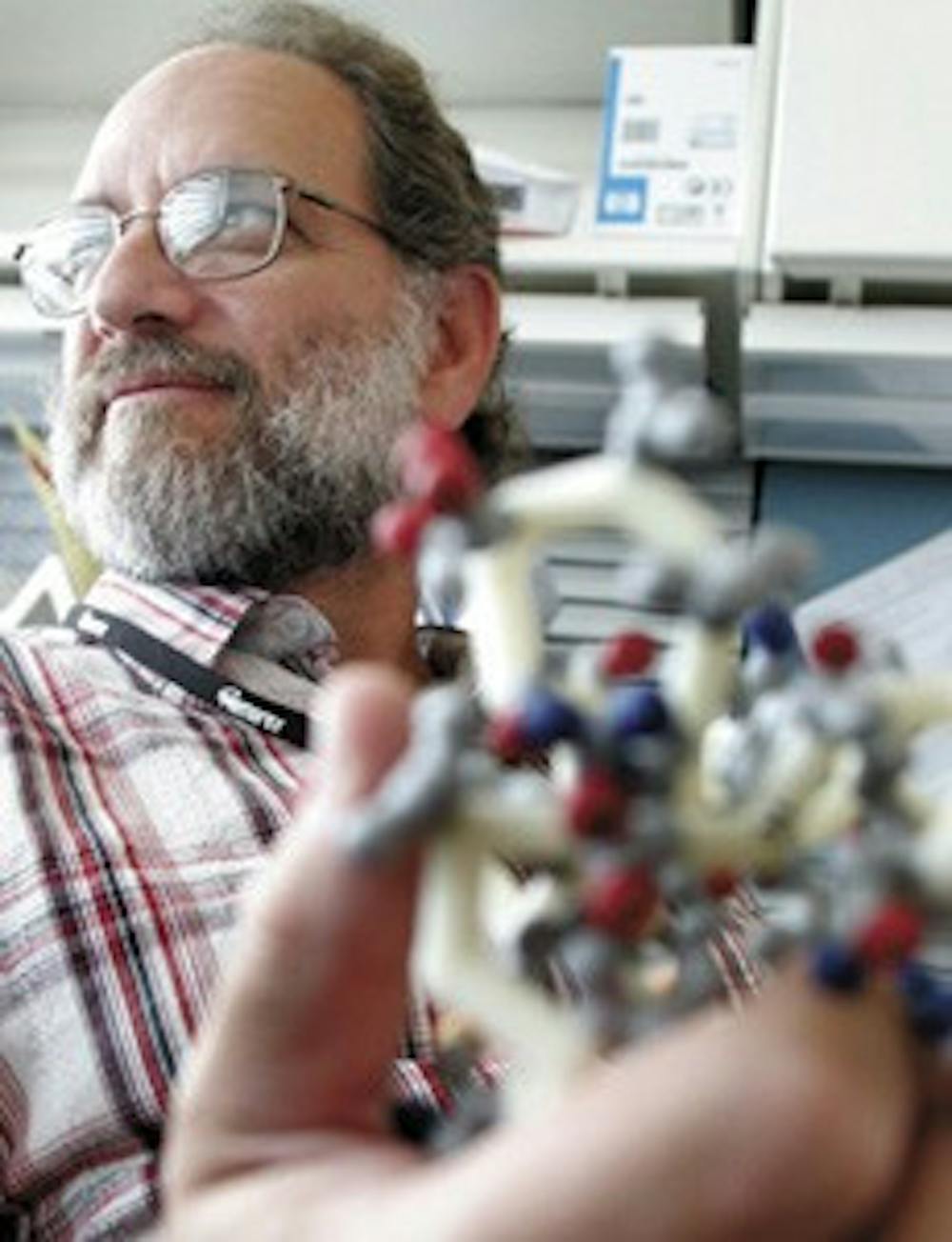Six years ago ASU Professor Bertram Jacobs walked along a street in a rural African village and had a dismal thought.
He knew the statistics, and looking around him, he realized 40 percent of the people he saw were probably infected with HIV, the virus that causes AIDS.
"It's like walking down the street and realizing within five years, half the people around you are going to be dead," he said.
That trip to Africa put a face - or rather, many faces - on Jacobs' research back in his ASU lab.
Now, six years later, he said he's less than a year away from perfecting a key component of an HIV vaccine, and if all goes according to plan, a complete vaccine might be ready in seven to eight years.
Jacobs and his team at the Biodesign Institute are modifying a virus that will host an HIV vaccine.
The virus, called vaccinia, is typically used as a smallpox vaccine. Like HIV, smallpox is an infectious disease that has no cure.
Once modified, it will hold HIV proteins that replicate in human cells and create an immune response to the disease, Jacobs said.
"The idea is that if somebody gets injected, they'll start making an immune response to the vaccinia virus," Jacobs said. "But there will also be HIV proteins present, so they'll make an immune response to HIV as well."
The research team is committed to alleviating the HIV epidemic in sub-Saharan Africa, Jacobs said.
Sub-Saharan Africa is home to more than 10 percent of the world's population but represents more than 60 percent of all people infected with HIV, according to The World Bank.
Jacobs and his research team at the Biodesign Institute have already successfully engineered a preliminary version of their virus. They created it by adding HIV genes to a virus similar to vaccinia, which they then tested on mice.
Not only did the vaccine work in those tests, but the team also found it to be safe, Jacobs said.
"We can't kill a mouse with this virus no matter how hard we try," he said. "We're pretty certain it's a whole lot more effective than the viruses that have been tested so far."
After ASU's work on the vaccinia virus is completed by August 2007, it will be tested in macaque monkeys, and depending on its success, human trials should follow within a matter of years, Jacobs said.
The Bill and Melinda Gates Foundation recently awarded a $900,000 grant to the Biodesign Institute that will fund further clinical trials and enable the team to put the finishing touches on the virus.
Graduate research assistant Damien Salamone said he's optimistic the virus would work in an HIV vaccine.
Salamone visited Africa with a group called Students for International Change, which teaches HIV and AIDS awareness. He also works with Jacobs.
Compared to DNA engineering methods, the approach Jacobs uses to create the vaccine will offer better protection and allow for the vaccine to be reproduced at a lower cost, Salamone said.
That's because the vaccinia virus has the ability to replicate in human cells, he said.
"We know this virus strain really well," he said. "It can protect people without causing complications."
The vaccine will need to be kept at a low cost in order for it to be distributed in sub-Saharan Africa, where the average income is $2 a day, Jacobs said.
Because the virus replicates on its own, production of the vaccine should be less expensive than some of the alternative methods.
Steve Kelling, an economics junior and ASU coordinator of Students for International Change, said a vaccine would be the "best thing" to happen to the AIDS epidemic.
"Right now education is the only weapon we have over HIV," he said. "A vaccine would change the entire approach to attacking the disease."
Reach the reporter at: annalyn.censky@asu.edu.




